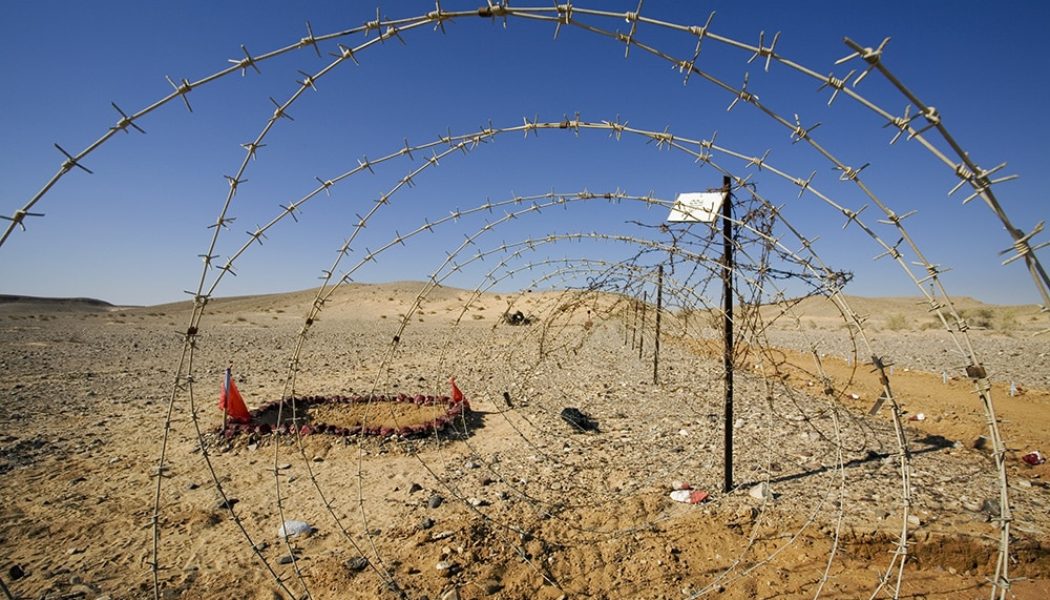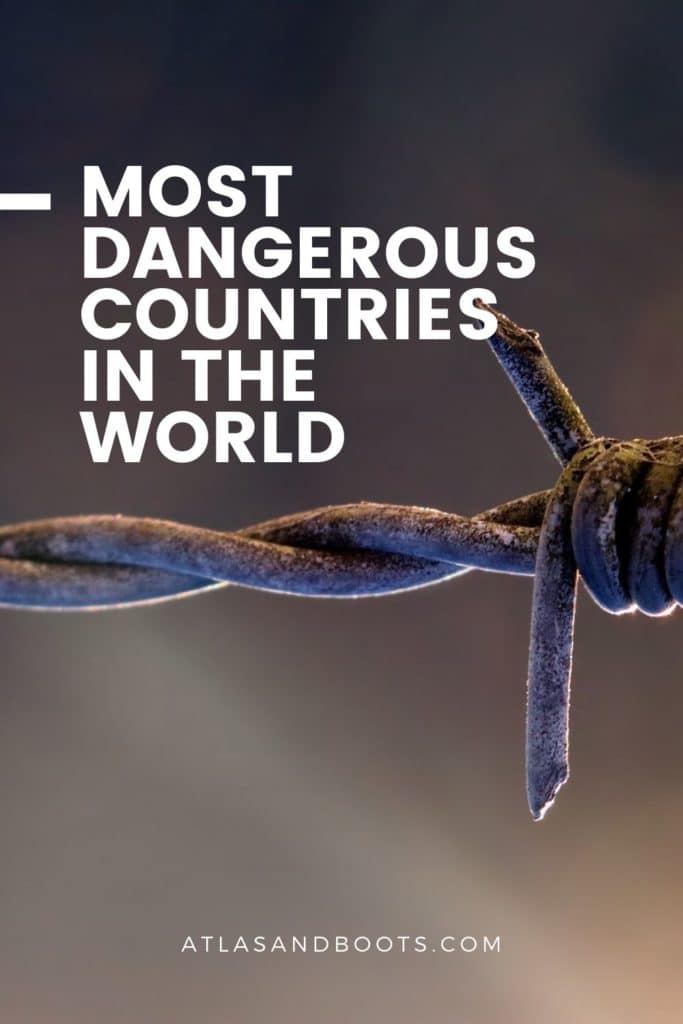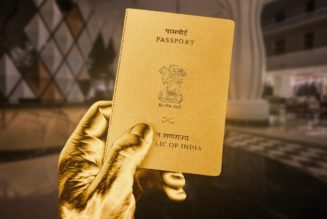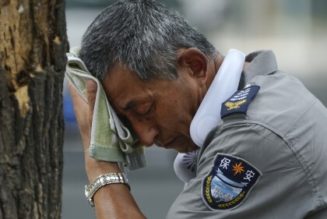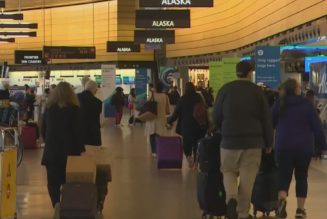The most dangerous countries in the world to visit in 2023 have been revealed in the latest Travel Risk Map
The most dangerous countries to visit in 2023 are Afghanistan, Central African Republic, Iraq, Libya, Mali, Somalia, South Sudan, Syria, Ukraine and Yemen according to the latest Travel Risk Map, an interactive tool produced by security specialists at International SOS.
The map is used to predict the safest and, conversely, the least safe countries in the world to visit and has four layers in total covering a country’s security risk, medical risk, and the impact of the pandemic on travel and domestic operations.
For the security layer of the map, countries are indexed according to their travel security risk rating, which uses five risk definitions: insignificant, low, medium, high and extreme.
International SOS uses a number of criteria to assess how the conditions in the country may impact visitors’ safety and security.
These include the threat posed to travellers by political violence (including terrorism, insurgency, politically motivated unrest and war), social unrest (including sectarian, communal and ethnic violence) and violent and petty crime.
Other factors assessed include transport infrastructure, the capability of security and emergency services, and the threat of natural disasters. It’s also possible to use the map to assess medical risk and road safety standards around the world.
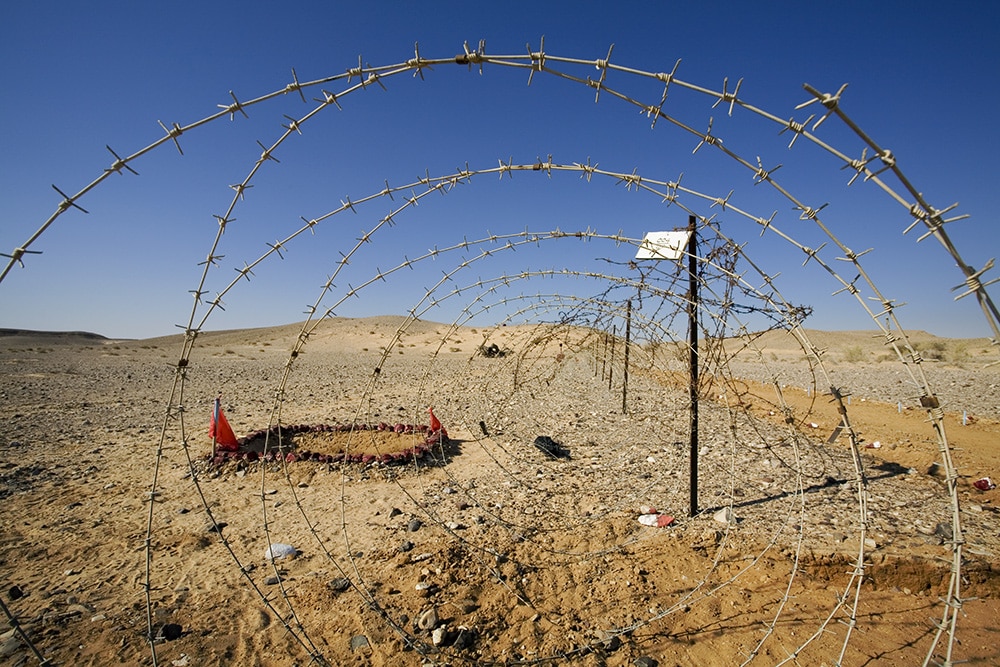
MOST DANGEROUS COUNTRIES IN THE WORLD
These are the 10 most dangerous countries in the world according to International SOS. They have been assessed as carrying an ‘extreme travel security risk’.
These include Ukraine, where Russia launched an invasion in February 2022; Afghanistan, which saw the Taliban take over in August 2021 as foreign forces pulled out of the country; and Syria which has been embroiled in civil war since 2011.
- Afghanistan
- Central African Republic
- Iraq
- Libya
- Mali
- Somalia
- South Sudan
- Syria
- Ukraine
- Yemen
A further four countries include regions (known as Security Risk Zones) that have been rated as an ‘extreme travel security risk’.
“Government control and law and order may be minimal or non-existent across large areas. Serious threat of violent attacks by armed groups targeting travellers and international assignees. Government and transport services are barely functional. Large parts of the country are inaccessible to foreigners.”
International SOS
SAFEST COUNTRIES IN THE WORLD
At the other end of the spectrum, the following 18 countries have been assessed as carrying an ‘insignificant travel security risk’ to travellers and therefore the safest countries to visit.

“Rates of violent crime are very low. There is no significant political violence or civil unrest and little sectarian, communal, racial or targeted violence against foreigners. Security and emergency services are effective and infrastructure is sound. Transport services are of a high standard with good safety records and only occasional travel disruption. Industrial action affecting essential services is rare.”
International SOS
Complete rankings
Most countries in Europe along with the USA, Australia, New Zealand and Canada have been assessed as carrying a ‘low travel security risk’. Ukraine is the only European country categorised as a ‘high’ or ‘extreme’ security risk.
Many countries in Asia and the Middle East including Jordan, Oman, Singapore, Japan, China, South Korea, Vietnam, Malaysia and Brunei are considered ‘low risk’.
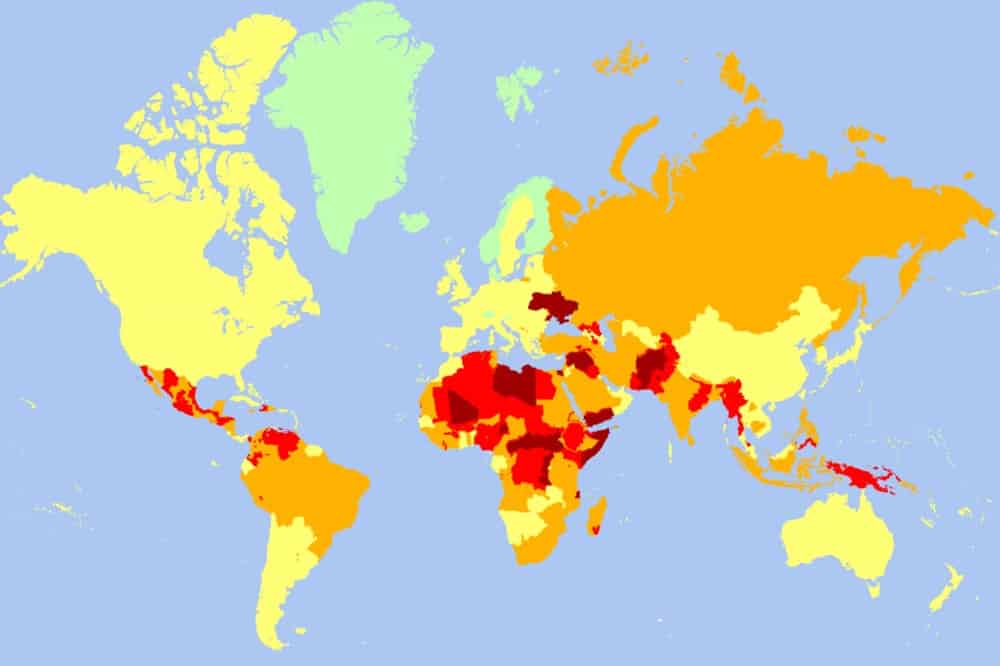
The most dangerous countries in Asia are Afghanistan and Pakistan; and Syria, Iraq and Yemen in the Middle East.
The most dangerous countries in Africa are Central African Republic, Libya, Mali, Somalia and South Sudan. In the Americas, El Salvador, Haiti, Honduras and Venezuela are considered ‘high security risk’.
Some countries fall into more than one category where certain regions within a country carry differing security risks.
EXTREME (14)
Afghanistan
Central African Republic
DR Congo (SRZ)
Egypt (SRZ)
Iraq
Libya
Mali
Nigeria (SRZ)
Pakistan (SRZ)
Somalia
South Sudan
Syria
Ukraine
Yemen
HIGH (14)
Burkina Faso
Chad
DR Congo
Egypt
Ethiopia
El Salvador
Haiti
Honduras
Mauritania
Nigeria
Pakistan
Papua New Guinea
Venezuela
MEDIUM (68)
Algeria
Angola
Bahrain
Bangladesh
Belize
Bolivia
Brazil
Burundi
Cambodia
Cameroon
Colombia
Comoros
Congo
Costa Rica
Djibouti
Dominican Republic
East Timor
Eritrea
Fiji
Guatemala
Guinea
Guinea-Bissau
Guyana
India
India
Indonesia
Iran
Israel
Ivory Coast
Jamaica
Kazakhstan
Kenya
Korea, North
Kosovo
Kyrgyzstan
Laos
Lebanon
Lesotho
Liberia
Madagascar
Mexico
Mongolia
Mozambique
Myanmar
Nepal
Nicaragua
Niger
Palestinian Territories
Peru
Philippines
Russia
Saudi Arabia
Sierra Leone
Solomon Islands
South Africa
Sri Lanka
Sudan
Swaziland (Eswatini)
Tajikistan
Tanzania
Togo
Trinidad and Tobago
Tunisia
Turkey
Turkmenistan
Uganda
Ukraine
Zimbabwe
LOW (91)
Albania
Antigua and Barbuda
Argentina
Armenia
Australia
Austria
Azerbaijan
Bahamas
Barbados
Belarus
Belgium
Benin
Bhutan
Bosnia and Herzegovina
Botswana
Brunei
Bulgaria
Canada
Chile
China
Croatia
Cuba
Cyprus
Czech Republic
Dominica
Ecuador
Equatorial Guinea
Estonia
France
Gabon
The Gambia
Georgia
Germany
Ghana
Greece
Grenada
Hungary
Ireland
Italy
Japan
Jordan
Korea, South
Kuwait
Latvia
Lithuania
Macedonia
Malawi
Malaysia
Maldives
Malta
Mauritius
Micronesia
Moldova
Monaco
Montenegro
Morocco
Namibia
Netherlands
New Zealand
Oman
Panama
Palau
Paraguay
Poland
Portugal
Qatar
Romania
Rwanda
Saint Kitts & Nevis
Saint Lucia
Saint Vincent and the Grenadines
Samoa
San Marino
Sao Tome and Principe
Senegal
Serbia
Singapore
Slovakia
Spain
Suriname
Sweden
Taiwan
Thailand
Tonga
UAE
United Kingdom
United States
Uruguay
Uzbekistan
Vanuatu
Vatican City
Vietnam
Zambia
INSIGNIFICANT (17)
Andorra
Cape Verde
Denmark
Finland
Greenland
Iceland
Kiribati
Liechtenstein
Luxembourg
Marshall Islands
Nauru
Norway
San Marino
Seychelles
Slovenia
Switzerland
Turks & Caicos
Tuvalu
Enjoyed this post? pin it for later…
Lead image: timsimages.uk/Shutterstock
